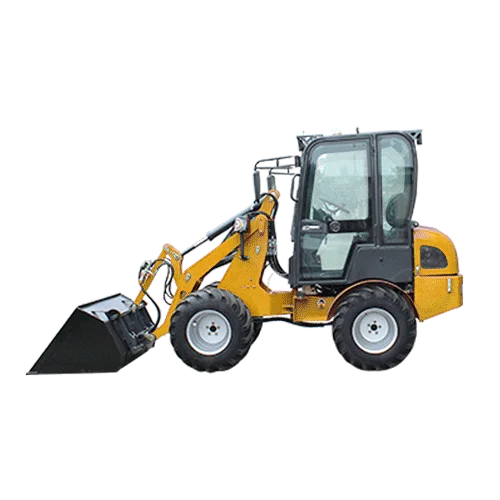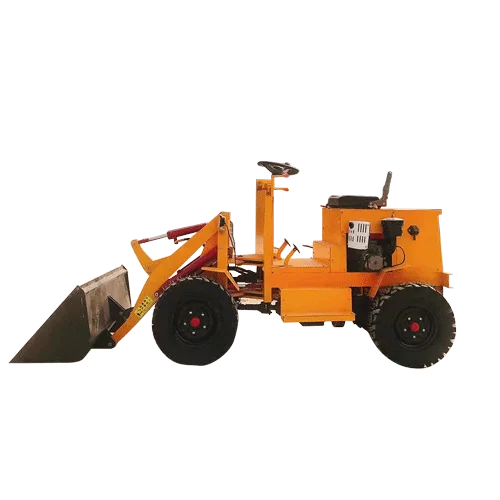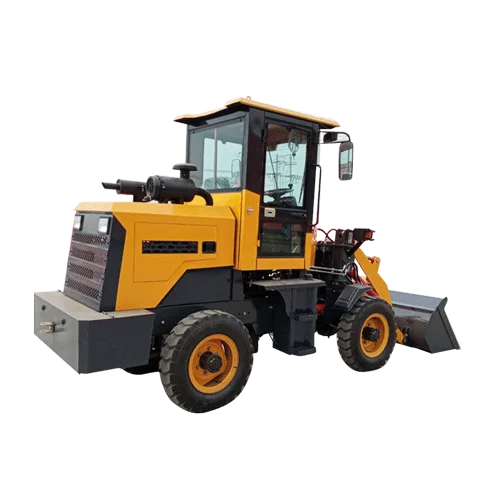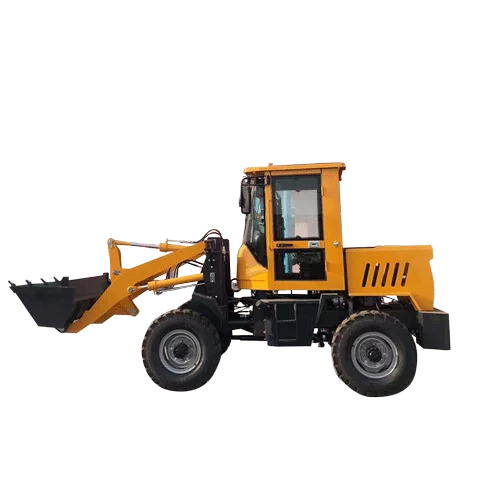Willkommen auf meinem Blog!
Bevor wir in den Inhalt eintauchen, würde ich mich freuen, wenn Sie mir auf meinen Social-Media-Plattformen folgen würden, wo ich weitere Einblicke gebe, mich mit der Community austausche und Updates poste. Hier erfahren Sie, wie Sie mit mir in Kontakt treten können:
Facebook:https://www.facebook.com/profile.php?id=100087112105480
LinkedIn:https://www.linkedin.com/showcase/99327366/admin/dashboard/
Lassen Sie uns nun unsere gemeinsame Reise beginnen. Ich hoffe, Sie finden die Inhalte hier aufschlussreich, ansprechend und wertvoll.
Inhaltsübersicht
Einführung

Ein kleiner Frontlader ist ein unverzichtbares Gerät für verschiedene Branchen, darunter das Baugewerbe, die Landwirtschaft und der Landschaftsbau. Egal, ob Sie Bauunternehmer, Landwirt oder Grundstückseigentümer sind, die Wahl des richtigen Laders mit den besten Eigenschaften kann sich erheblich auf die Effizienz und Produktivität auswirken. Diese Maschinen sind so konstruiert, dass sie auf engstem Raum manövrierfähig sind und dennoch leistungsstarke Hebe- und Ladefunktionen bieten.
In diesem Artikel gehen wir auf die wichtigsten Merkmale ein, auf die Sie bei der Auswahl eines kleinen Frontladers achten sollten. Die Kenntnis dieser Schlüsselaspekte wird Ihnen helfen, eine fundierte Entscheidung auf der Grundlage Ihrer spezifischen Anforderungen zu treffen.
Kompaktes Design für maximale Manövrierfähigkeit
Einer der Hauptvorteile eines kleinen Frontladers ist seine kompakte Größe. Im Gegensatz zu größeren Maschinen können diese Lader auf engstem Raum eingesetzt werden und eignen sich daher perfekt für Arbeiten, die Präzision und Flexibilität erfordern. Ein gut konzipierter Kompaktlader sollte einen engen Wenderadius haben, der es dem Fahrer ermöglicht, auf engen Wegen zu navigieren und in engen Umgebungen effizient zu arbeiten.
Der ideale kleine Frontlader sollte außerdem leicht und dennoch robust sein, um Stabilität zu gewährleisten und gleichzeitig den Boden so wenig wie möglich zu stören. Diese Eigenschaft ist besonders wichtig für den Einsatz im Landschaftsbau und in der Landwirtschaft, wo die Schonung des Geländes eine Priorität ist.
Leistungsstarkes Hydrauliksystem für verbesserte Leistung

Ein starkes Hydrauliksystem ist entscheidend für die Effizienz eines kleinen Frontladers. Das Hydrauliksystem steuert das Heben, Kippen und die Gesamtbewegung des Laders und ermöglicht einen reibungslosen und präzisen Betrieb. Achten Sie bei der Auswahl eines Laders auf die folgenden Hydraulikfunktionen:
- Hubkapazität: Bestimmt, wie viel Gewicht der Lader ohne Leistungseinbußen bewältigen kann.
- Durchflussmenge: Beeinflusst die Geschwindigkeit der hydraulischen Bewegungen, was sich auf die gesamte Arbeitseffizienz auswirkt.
- Kontrollmechanismen: Die fortschrittliche Hydrauliksteuerung ermöglicht einen präzisen Betrieb und entlastet den Bediener.
Ein gut durchdachtes Hydrauliksystem sorgt dafür, dass der Lader verschiedene Materialien, von Erde und Kies bis hin zu Schutt und Heu, ohne übermäßige Belastung der Maschine handhaben kann.
Vielseitige Kompatibilität der Anbaugeräte
Ein kleiner Frontlader sollte in der Lage sein, mehrere Anbaugeräte zu verwenden, um seinen Nutzen zu maximieren. Anstatt in separate Maschinen für verschiedene Aufgaben zu investieren, ermöglicht ein vielseitiger Lader einen schnellen Wechsel der Anbaugeräte und ist damit eine kostengünstige Wahl. Einige wichtige Anbaugeräte, die Sie in Betracht ziehen sollten, sind:
- Eimer: Für die allgemeine Verladung und den Materialumschlag.
- Palettengabeln: Ideal zum Heben und Transportieren von palettierten Gütern.
- Greifen: Geeignet für die Handhabung von Baumstämmen, Gestrüpp und Schutt.
- Schnecken: Wird zum Bohren von Löchern in unterschiedlichem Gelände verwendet.
- Schneeschaufeln: Unverzichtbar für die Schneeräumung in den Wintermonaten.
Der Lader sollte über ein einfach zu bedienendes Schnellwechselsystem verfügen, das es dem Fahrer ermöglicht, ohne Spezialwerkzeug effizient zwischen den Anbaugeräten zu wechseln.
Kraftstoffeffizienz und Motorleistung
Die Kraftstoffeffizienz ist ein entscheidender Faktor bei der Auswahl eines kleinen Frontladers, da sie sich direkt auf die Betriebskosten auswirkt. Ein leistungsstarker Motor sollte bieten:
- Optimaler Kraftstoffverbrauch: Gewährleistung langer Arbeitszeiten ohne übermäßiges Nachtanken.
- Geringere Emissionen: Einhaltung der Umweltvorschriften für einen sauberen Betrieb.
- Niedriger Geräuschpegel: Minimierung der Lärmbelästigung für ein besseres Arbeitsumfeld.
Darüber hinaus können Lader, die mit einer automatischen Motorabschaltung ausgestattet sind, dazu beitragen, Kraftstoff zu sparen, wenn die Maschine im Leerlauf ist. Die Wahl eines kraftstoffsparenden Laders kann im Laufe der Zeit zu beträchtlichen Einsparungen führen und gleichzeitig eine hohe Produktivität gewährleisten.
Bedienerkomfort und ergonomische Bedienelemente

Der Komfort des Fahrers spielt eine entscheidende Rolle für die Gesamteffizienz und Produktivität. Ein kleiner Frontlader sollte ein ergonomisches Design haben, das Folgendes umfasst:
- Verstellbarer Sitz: Unterstützung und Verringerung der Ermüdung bei langen Arbeitszeiten.
- Benutzerfreundliche Steuerung: Intuitive Joystick- oder Hebelsteuerung für reibungslosen Betrieb.
- Klare Sicht: Eine gut durchdachte Kabinenstruktur mit großen Fenstern für mehr Sicherheit.
- Klimatisierung: Klimatisierungs- oder Heizungsoptionen für den Einsatz bei jedem Wetter.
Eine komfortable Arbeitsumgebung sorgt dafür, dass sich die Bediener auf die jeweilige Aufgabe konzentrieren können, was sowohl die Präzision als auch die Sicherheit erhöht.
Tabelle: Hauptmerkmale eines kleinen Frontladers
| Merkmal | Beschreibung |
|---|---|
| Kompakte Bauweise | Ermöglicht den Betrieb in engen Räumen mit Leichtigkeit. |
| Hydraulisches System | Ermöglicht reibungsloses Heben, Kippen und Steuern. |
| Kompatibilität von Anbaugeräten | Unterstützt verschiedene Werkzeuge für vielseitige Anwendungen. |
| Treibstoff-Effizienz | Reduziert die Betriebskosten und verbessert die Nachhaltigkeit. |
| Bedienerkomfort | Ermüdungsfreies Arbeiten durch ergonomisches Design. |
| Langlebige Reifen | Bietet Stabilität und Traktion auf unterschiedlichen Untergründen. |
| Einfache Wartung | Ermöglicht eine schnelle Wartung und reduzierte Ausfallzeiten. |
| Sicherheitsmerkmale | Mit Überrollschutz und automatischen Abschaltsystemen. |
| Tragfähigkeit | Bestimmt das maximale Gewicht, das der Lader heben kann. |
| Bodenfreiheit | Hilft bei der effizienten Navigation auf unebenen Oberflächen. |
Langlebige Reifen für verschiedene Terrains
Die Qualität der Reifen wirkt sich direkt auf die Leistung und Langlebigkeit eines kleinen Frontladers aus. Je nach Arbeitsumgebung können unterschiedliche Reifentypen erforderlich sein:
- Robuste Industriereifen: Ideal für Baustellen mit unwegsamem Gelände.
- Landwirtschaftliche Reifen: Entwickelt für weiche oder schlammige Oberflächen, um ein Einsinken zu verhindern.
- All-Terrain-Reifen: Ein ausgewogenes Verhältnis zwischen Haltbarkeit und reibungsloser Leistung auf gemischten Oberflächen.
Die Wahl der richtigen Reifen sorgt für Stabilität, Traktion und eine längere Lebensdauer, was den Bedarf an häufigen Ersatzreifen reduziert.
Einfache Wartung und Servicefreundlichkeit
Regelmäßige Wartung ist der Schlüssel zur Verlängerung der Lebensdauer eines kleinen Frontladers. Ein guter Lader sollte haben:
- Leicht zugängliche Motorkomponenten für schnelle Inspektionen.
- Einfache Schmiernippel um die Gelenke geschmiert zu halten.
- Langlebige Filter und Kühlsysteme um Überhitzung zu vermeiden.
Lader mit Selbstdiagnosesystemen können den Bediener auf potenzielle Probleme aufmerksam machen, bevor sie sich zu größeren Störungen auswachsen, und so Ausfallzeiten und Reparaturkosten reduzieren.
Sicherheitsmerkmale für einen sicheren Betrieb
Die Sicherheit sollte beim Einsatz schwerer Maschinen immer an erster Stelle stehen. Ein kleiner Frontlader sollte mit folgenden Merkmalen ausgestattet sein:
- Überrollschutzvorrichtungen (ROPS): Schützt das Bedienpersonal im Falle des Umkippens.
- Backup-Alarme und -Lichter: Warnt Arbeiter in der Nähe vor Maschinenbewegungen.
- Sicherheitsgurt und sicheres Kabinendesign: Erhöht die Sicherheit des Bedieners während des Betriebs.
Diese Sicherheitsmerkmale minimieren die Risiken und gewährleisten die Einhaltung der Sicherheitsstandards am Arbeitsplatz.
Schlussfolgerung

Ein kleiner Frontlader ist eine leistungsstarke und vielseitige Maschine, die die Effizienz in verschiedenen Branchen erheblich steigern kann. Wenn Sie die wichtigsten Merkmale wie Hydraulikleistung, Kraftstoffeffizienz, Kompatibilität der Anbaugeräte und Bedienerkomfort berücksichtigen, können Sie den richtigen Lader für Ihre Bedürfnisse auswählen. Darüber hinaus tragen ordnungsgemäße Wartungs- und Sicherheitsmaßnahmen dazu bei, die Lebensdauer der Maschine zu verlängern und eine sichere Arbeitsumgebung zu gewährleisten.
Ganz gleich, ob Sie einen Lader für die Landwirtschaft, das Baugewerbe oder den Landschaftsbau benötigen, die Kenntnis dieser wesentlichen Merkmale wird Ihnen helfen, eine fundierte Kaufentscheidung zu treffen.
FAQ
F: Wofür wird ein kleiner Frontlader hauptsächlich eingesetzt?
A: Ein kleiner Frontlader wird hauptsächlich für den Materialumschlag eingesetzt, einschließlich Laden, Transportieren und Aufräumen von Schutt im Baugewerbe, in der Landwirtschaft und im Landschaftsbau.
F: Wie wähle ich das richtige Anbaugerät für meinen Lader aus?
A: Berücksichtigen Sie die Art der Arbeit, die Sie ausführen müssen. Schaufeln eignen sich hervorragend für allgemeine Ladearbeiten, während Palettengabeln, Greifer und Schnecken spezielle Funktionen bieten.
F: Sind kleine Frontlader kraftstoffsparend?
A: Viele moderne Lader sind mit kraftstoffsparenden Motoren ausgestattet, die den Stromverbrauch optimieren und gleichzeitig die Emissionen reduzieren, was zu niedrigeren Betriebskosten führt.
F: Welche Wartung ist für einen kleinen Frontlader erforderlich?
A: Zu den regelmäßigen Wartungsarbeiten gehören das Überprüfen der Hydraulikflüssigkeitsstände, das Schmieren beweglicher Teile, die Inspektion der Reifen und das Sicherstellen des ordnungsgemäßen Funktionierens des Kühlsystems.
F: Können kleine Frontlader auf unebenem Gelände eingesetzt werden?
A: Ja, aber die Wahl der richtigen Reifen und die Gewährleistung einer angemessenen Bodenfreiheit tragen zur Verbesserung der Stabilität und Traktion auf unebenem Untergrund bei.
